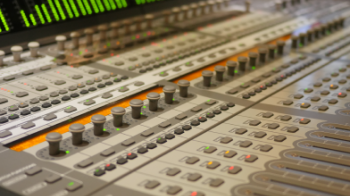Online audio: The opportunities and challenges for advertisers
Faye McDowall, Lead Digital Strategist, DAX Worldwide
For the first time, more than half the population are listening to audio via a connected device every week. That’s 28.5 million people choosing to listen to their favourite radio breakfast show, SoundCloud remix or true crime podcast via their smartphones, smart speakers, desktops or laptops.
While music remains our nation’s favourite content to consume - be it streamed radio or music - our heads have certainly been turned by the rise of podcasts and smart speakers.
As a nation, we are spending an average of over seven hours a week listening to the likes of Dr. Hazel Wallace, Dirty John and Paul McKenna and if the podcasts’ power of the niche doesn’t tickle our fancy then just about every media company from Sky to ITV are now producing podcasts. These publishers aren’t creating podcasts as signposts to their broadcast content; podcast content is now a strand in its own right.
Brands are clamouring to get involved because it lets them into a space that has become scarce commodity – a highly engaged, clutter free, 20 minutes. When was the last time you watched your most highly anticipated TV show without checking your phone? But try listening to even the most lightweight podcast while doing something else and you soon lose the plot. Advertisers know they can get into the ears of the listener and have their full attention, be that a host read or spot ad.
Smart speakers on the other hand are the opposite listening experience. Listening to music rules on an Echo, Google Home etc. and generally a communal experience MIDAS figures tell us that 5.3m of us listen with friends or family. The devices usually in the living room or the kitchen, areas where we entertain or perform the routine tasks which form daily family life. This could be the reason why we spend 10.5 hours a week listening via a smart speaker, and more than on any other device.
For advertisers’ smart speakers offer a challenge. They don’t have the same audience targeting capabilities we’ve become used to with other digital audio devices. Targeting capabilities are limited to city or day part level.
The temptation from the industry is to get carried away with voice. The idea our audiences will spend time “talking” to expensive and often generally useless branded skills. This doesn’t yet match the reality – we are still using these devices for fart noises, jokes and importantly playing our favourite music. (Source: Adobe Analytics).
Smart speakers are at the heart of the home so, via audio, we can access the all-important situational context. We know listeners are carrying out a range of activities from drinking soft drinks – my personal favourite – to housework, eating, cooking and childcare. Brands should be thinking about how they can use these situational contextual moments to greater effect in advertising. For proof this works, just check out Radiocentre’s new ‘Hear and Now’ research which proves a 23% uplift in engagement when the advertising is situationally relevant.
Want to find out more
This blog piece was written as part of the IAB UK’s Listening Britain series. See more findings, research and opinions here.
Related content
Listening Britain 2016 infographic
Learn moreListening Britain 2017 infographic
Learn moreListening Britain Q4 2017 infographic
Learn moreListening Britain Infographic Spring 2018
Learn more
Rediscover the joy of digital advertising
Champion connections instead of clicks. Capture audiences' imaginations, not just their attention. Boldly find your own beat instead of letting tech set the pace. It’s time to rediscover the joy of digital.


